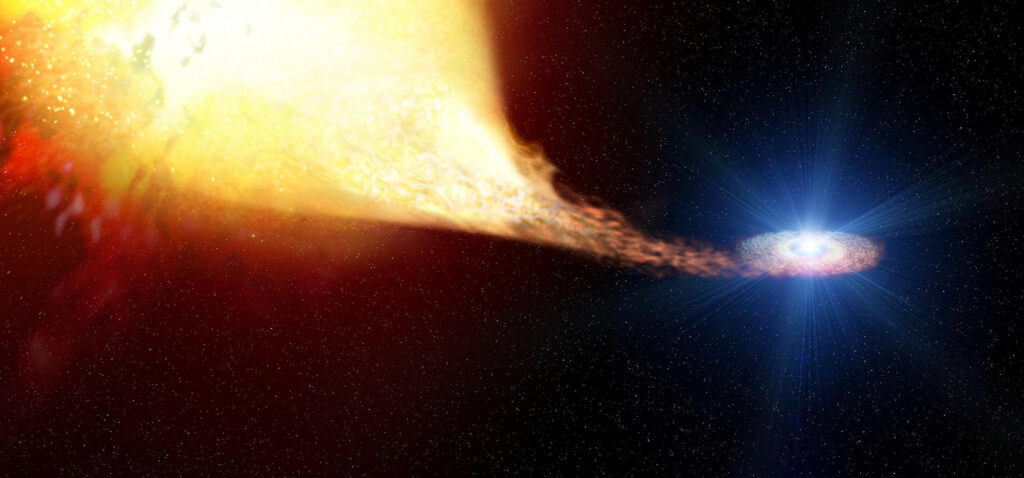A team of researchers from the Massachusetts Institute of Technology (MIT) reported the discovery of a cataclysmic variable with the smallest known period of orbit to date. It is only 51 minutes.

Cataclysmic variables are close binary systems showing flash activity. They consist of a white dwarf and an ordinary main sequence star. The white dwarf gradually pulls over and absorbs the matter of its companion. This process is accompanied by the release of a large amount of energy and a temporary change in the brightness of the system.
The newly found cataclysmic variable was designated ZTF J1813+4251. It is located at a distance of three thousand light-years from Earth in the direction of the constellation Hercules. The variable was discovered during the study of images taken as part of the celestial survey of the Zwicky Transient Facility. Astronomers from MIT analyzed the brightness changes of over a billion stars, after which they examined the most remarkable objects using the telescopes of the Keck Observatory.
Observations have shown that the white dwarf that is part of ZTF J1813+4251 has a mass of about half the mass of the Sun. As for the star, it is nearing the end of its life cycle. The white dwarf has already absorbed most of its hydrogen shell. Now the mass of the star is about 10% of the solar one, and the radius is comparable to the radius of Jupiter.
The researchers also conducted computer simulations to find out the future of the system. It showed that over the next 70 million years, the white dwarf will absorb the remnants of the hydrogen shell of the star. This process will be accompanied by a change in the circulation period — it will decrease from 51 to just 18 minutes. But after the white dwarf loses its “food base”, it and the dense helium core remaining from the star will begin to move away from each other again.
According to https://phys.org
Follow us on Twitter to get the most interesting space news in time
https://twitter.com/ust_magazine

